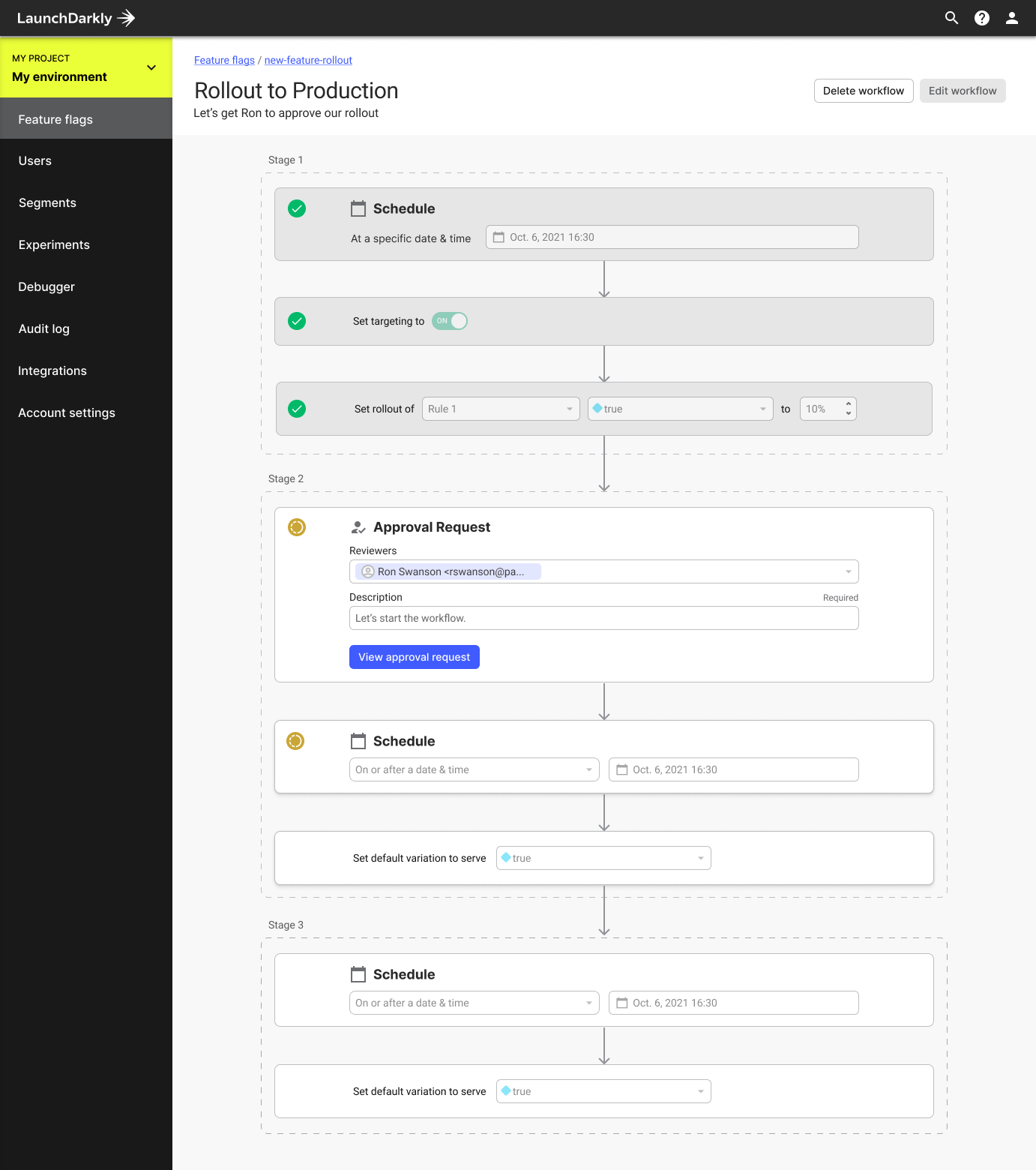
LaunchDarkly Workflow Builder
How I translated a founder's vision into reality
It’s 4am. Your alarm’s going off. You’re bleary-eyed and tired but have to log into LaunchDarkly to rollout your new feature to 5% of your audience. Then you’ll have to do that again the next day to another 5%. And again the next day. And so on until it’s rolled out to 100% of your users.
These are the hoops we made our customers (and ourselves) jump through every time they launched a new feature. It was a painful, manual, and occasionally error-prone process. It was an obvious pain point that we should solve, and one that no competitor had a solution to, either.
Our solution was the Workflow Builder: a visual way to automate feature launches in LaunchDarkly.
 Screenshot of the finished workflow builder
Screenshot of the finished workflow builder
How’d we get to the workflow builder?
The pain I described above was well-known to the co-founder — both from experiencing it firsthand, and from talking to customers. As such, he had already had a vision in mind: most software launches are a repeatable process, so we should let customers automate that in LaunchDarkly. Not only would it save time, toil, and prevent errors, but it would be a competitive differentiator to further cement our place as the market leader.
To turn this vision into reality, myself and the PM ran a day-long workshop with the co-founder and VP of Engineering & Product.
The first half of the day was opportunity framing: what pain points do customers currently have, what are their release processes, and how have other products solved similar challenges (we didn’t look at direct competitors, since they didn’t have anything like this, but rather automation products like Zapier).
The second half of the day was solution exploration: whiteboarding all the pieces of the finished solution. We started high-level going through all the screens we’ll need and the places in the product that we’ll need to update, then dove into fleshing those out with more sketches.
Some of the key challenges we had to solve were:
- Release processes all have similar contours, but the specifics are unique for every organization. Building common launches into LaunchDarkly (like a progressive rollout, or alpha → beta → GA launches) would make for a really easy-to-use feature, but it wouldn’t be flexible enough to do it the exact way each customer does it. So our main challenge was: how do we create a solution that’s flexible enough to support any process, while not being overwhelming or confusing to set up?
- Where do you access this feature? The main feature flag page is already bursting at the seams, so we needed to balance discoverability with not disrupting existing core user flows.
- When a workflow is running, how would a user know that when viewing a feature flag? This was especially important because teams build software, not individuals, so if person A starts a workflow, person B may not be aware of that when making changes to the flag (which could lead to errors, like the wrong end users seeing a feature still in development).
- How do I manage workflows? Where can I see all that exist, stop them, modify them, etc.? Can I re-use them? If so, how?
The bulk of the afternoon was spent whiteboarding solutions to these challenges, and poking holes in each other’s ideas to ensure we were thinking through the problems from every angle. By the end of the day we had a sketch of the overall system, the primary screens that would need to be built, and some foundational product and design decisions that underlie the whole system and would guide the team as they fleshed out the details.
Foundational product and design decisions
- Workflows should be visualized from top to bottom: Rationale: top-to-bottom is common in other workflow products (like Zapier), and visually represents the idea of a timeline well. It allows space for long, complex workflows (like some of our customers have), while making it easy to build.
- Workflows should be built one step at a time: some customers have have long, complex release processes, so to make that manageable they should add a step at a time, and we’ll provide relevant, valid options rather than presenting everything you could do with a flag and asking them to sort through the options.
- Use intelligent default values, and make them easy to change: Using intelligent defaults (like filling in the first step to start “Now” and having a blank action ready to be filled so that people feel a sense of progress and aren’t facing down a blank page), will guide people through the process, and make it less overwhelming and daunting.
- Each step of the workflow should be directly manipulable: Editing steps directly inline, rather than opening modals or drawers, will help people get in a flow of creating a workflow, and be less UI to learn.
- Stages should be implicit and optional: The feature has a concept called “stages” that group sets of actions together. For example, customers frequently do make multiple changes to a flag at one time, but think of them as one “set” of changes. We decided to support this by grouping sets of changes into “stages”, but we decided that we should do this implicitly and make it optional for users to set this themselves, in order to simplify the creation of workflows.
- Visualize workflows as a summarized timeline: We want to show workflows in various places in the product, so a summarized timeline view will give us a compact, visual component to use in various places.
Upping the fidelity
At the end of the workshop we felt pretty confident in the overall solution. It didn’t answer every question (nor should it – that was the team’s job), but it was a solid base to start from. The next day I turned our whiteboard sketches into lo-fi mockups. I did this to:
- Make sure there were no gaps in our reasoning
- Confirm with the leadership team that this matched what we discussed (turning sketches into even slightly-higher-fidelity mocks can expose if we each had different pictures in our heads)
- Have artifacts to hand off to the team who would build this (that were clearer than whiteboard sketches)
Urgency was important here because we wanted to launch an early access program (EAP) in November at our annual user conference, and it was already August, so I spent about a day doing quick-and-dirty mocks. I didn’t get bogged down in the details and just focused on the core screens and flows we had discussed the previous day.
I got a quick thumbs up from leadership that everything matched what we discussed, and from there we reviewed these mocks with the team who was going to build it. Overall everything was clear, and the questions were mostly about specific details that we were leaving up to the team to fill in. No questions they raised upended any of our original thinking.
My role transitioned into overseeing the work of the designer to make sure his finished designs matched our vision.
Usability testing
After the product designer fleshed out our lo-fi mocks, he ran usability tests with about 7 people — a mix of internal users and customers. Learnings:
- Overall usability was good. Everyone was able to set up workflows successfully, and understood what was being shown to them on the screen. ~~The vertical layout, and directly manipulable steps (two of our guiding principles) were intuitive to use.~~
- People really liked seeing active workflows when looking at a feature flag, confirming our intuition that surfacing upcoming changes would be important.
- We got feature requests around wanting more types of flag targeting changes in the workflow builder.
- We originally started with a small subset of changes you could make in order to 1. Simplify the builder (not every type of action made sense in the context of setting up a release process), and 2. Reduce scope to the minimum useful feature set to turn on for select customers in the EAP. It wasn’t surprising that people asked for more during testing, but it was validating that the feature as a whole is useful (they want more of it!), and it helped us prioritize which targeting changes to add next.
- Got at least one feature request for saving these workflows as templates, which was functionality we discussed in the workshop but didn’t spend time sketching. We had a strong hunch that people would want to re-use workflows, so it was validating to get this feature request.
- As with all usability testing there were details to polish, like unclear wording, confusing iconography, the state of current vs upcoming workflows, and so on, which we updated before the EAP.
Early Access Program
In mid-November (just over 3 months after the workshop) we launched the Early Access Program to let select customers use the feature and give us feedback before we launched to all Enterprise customers.
About this time the designer working on this project left, so I took over primary design responsibilities. Myself and the PM did follow up conversations with EAP users and watched FullStory sessions to learn what needed to be improved before launch.
Most of the feedback matched what we heard in the usability testing: the feature was broadly useful and valuable, but people wanted to use more flag targeting changes, and wanted to save workflows as templates.
Preparing for launch
In addition to the feedback we got during the EAP, there was some functionality we had already planned to build for the full launch: adding our first built-in workflow of a progressive rollout (this is the scenario described at the beginning), upsells for non-Enterprise accounts, and a read-only view of workflows past, present, and future.

Wrap up
We set out to automate release process, and reduce the toil and pain of doing it manually. No more 5am wakeups. So how well did we do?
The co-founder had a vision of how he wanted this solved, an ahead of the GA launch he said, “This is a strong opening salvo.” (This may not sound like much, but if you knew him you’d know this was high praise).
But more importantly, what was the customer impact? In the 3 months after launch, 300 workflows had been run, and some of our biggest customers had begun automating their releases. In the words of James Pipe, Head of Product at DroneDeploy, “Feature Workflows saves my team time, helps us to avoid mistakes, and enables us to stage automatic rollouts.”
That’s exactly what we set out to achieve, and hearing that from one of our customers was extremely gratifying.
 Caption
Caption
 Caption
Caption
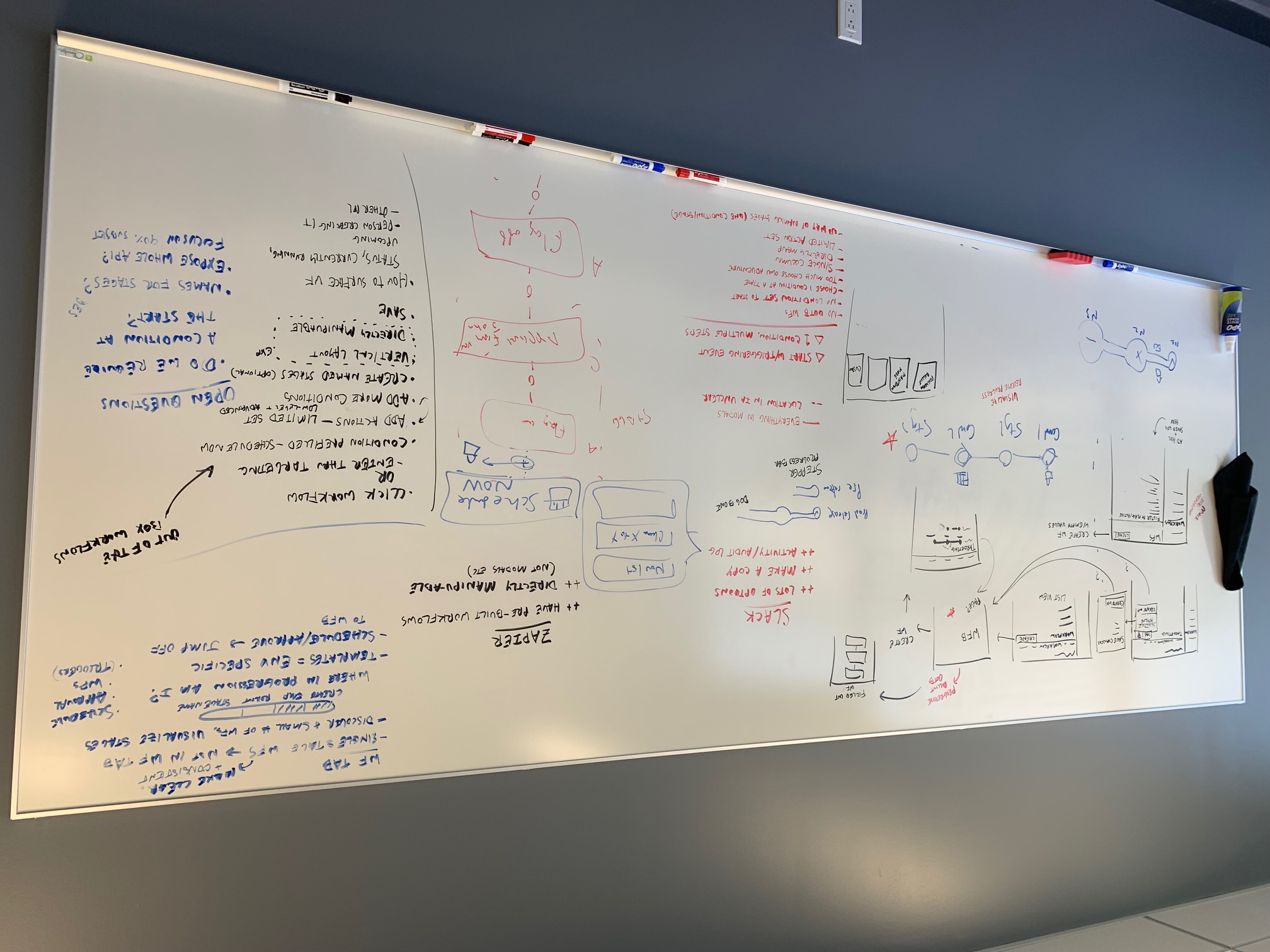 Caption
Caption
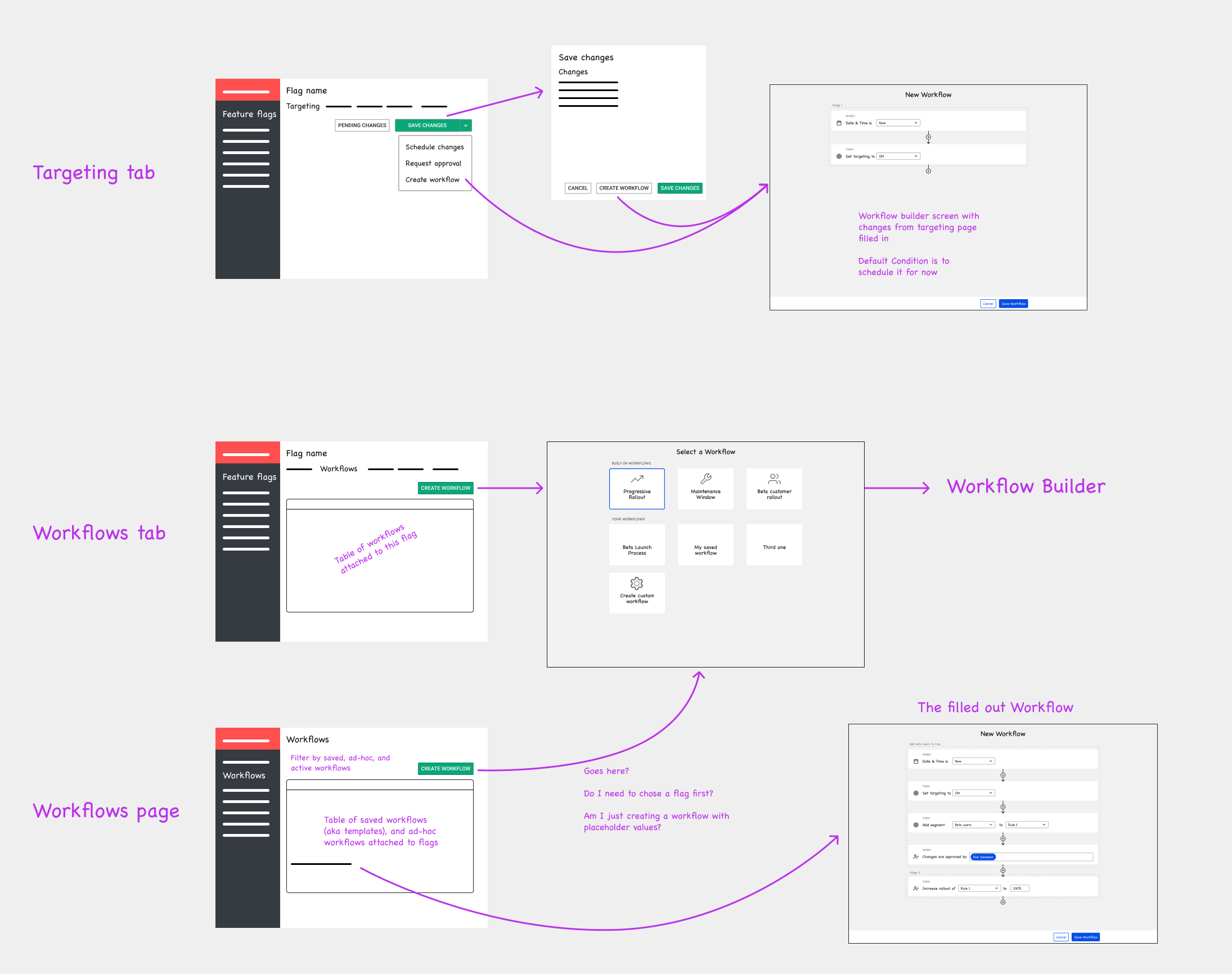 Caption
Caption
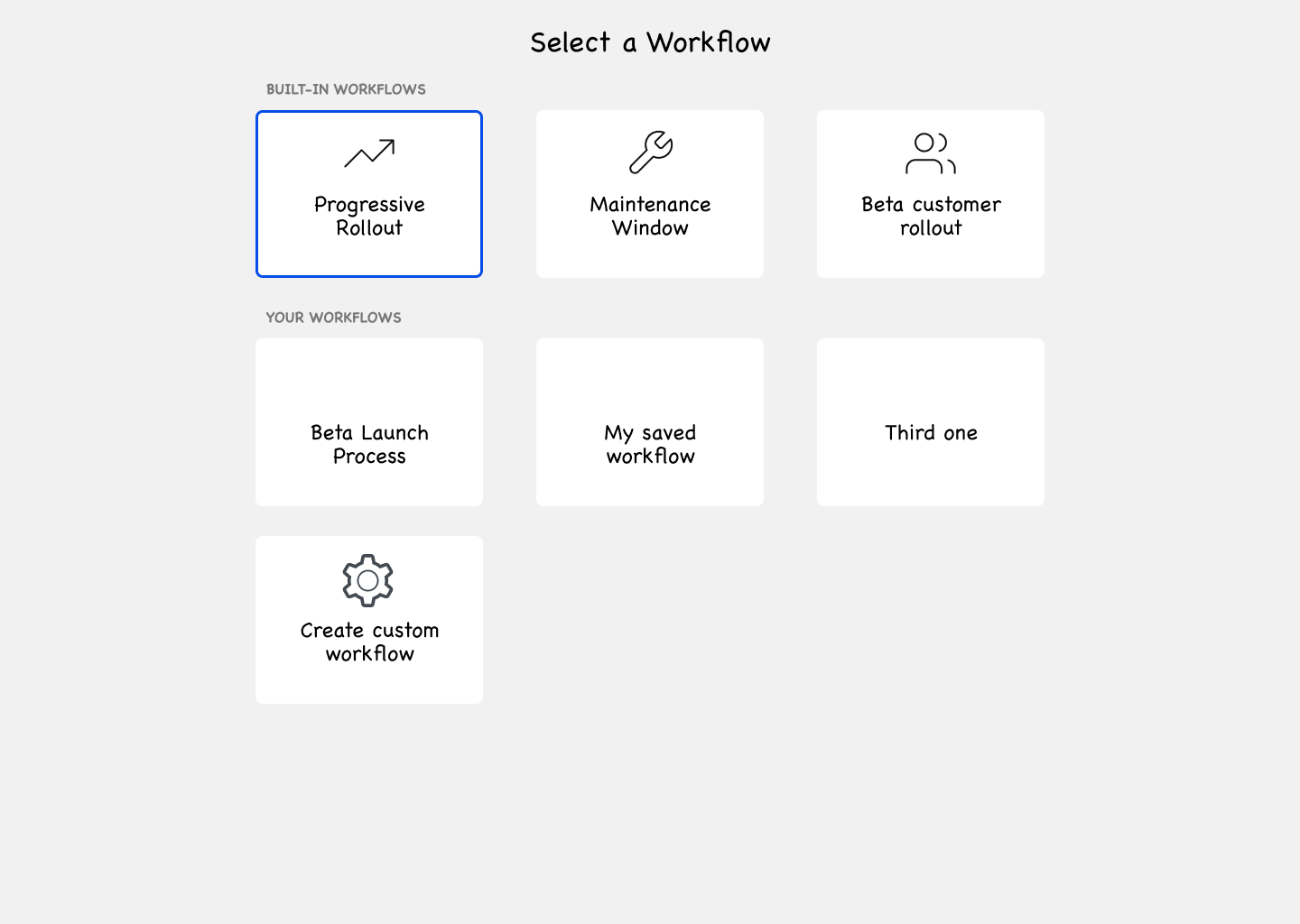 Caption
Caption
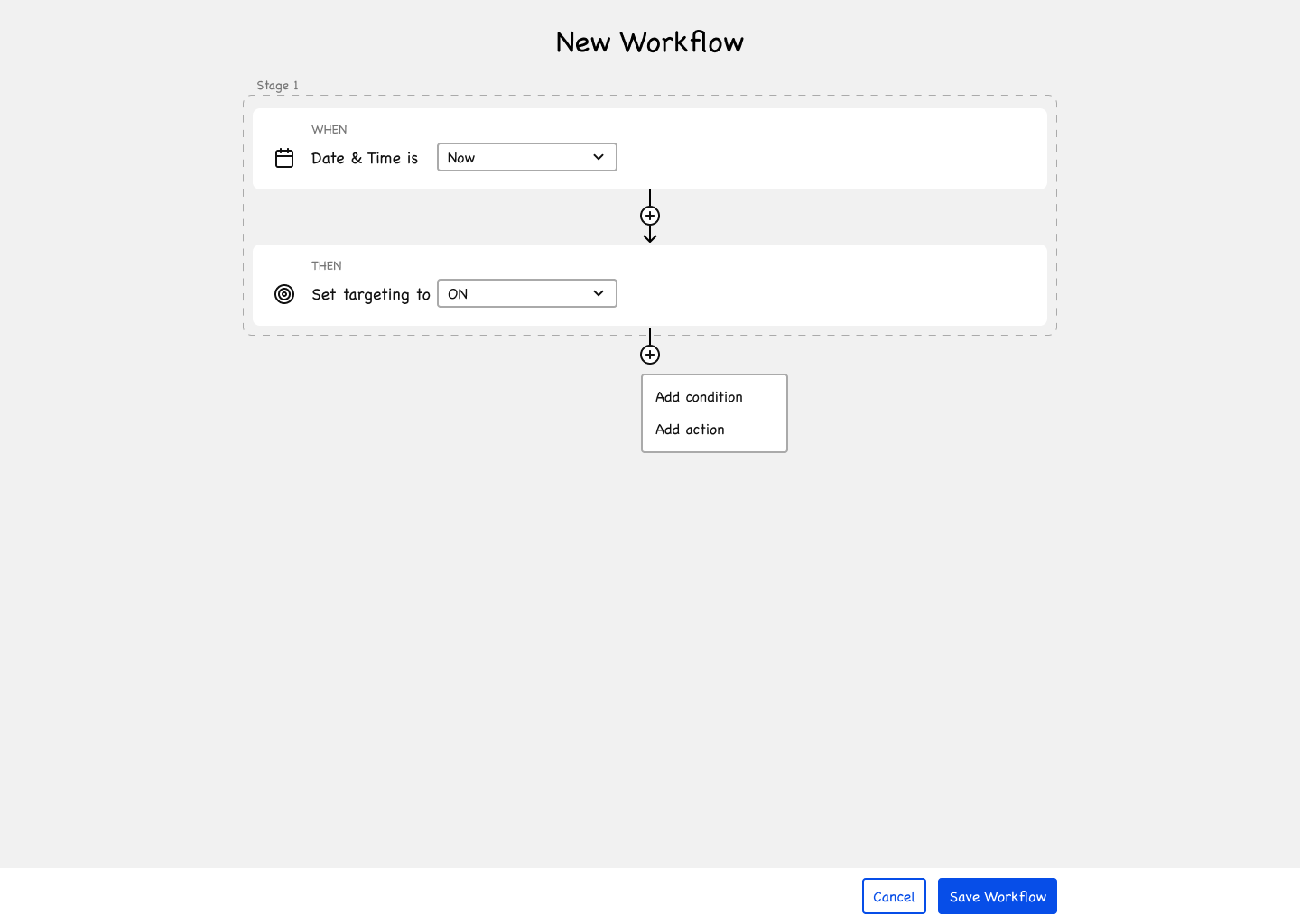 Caption
Caption
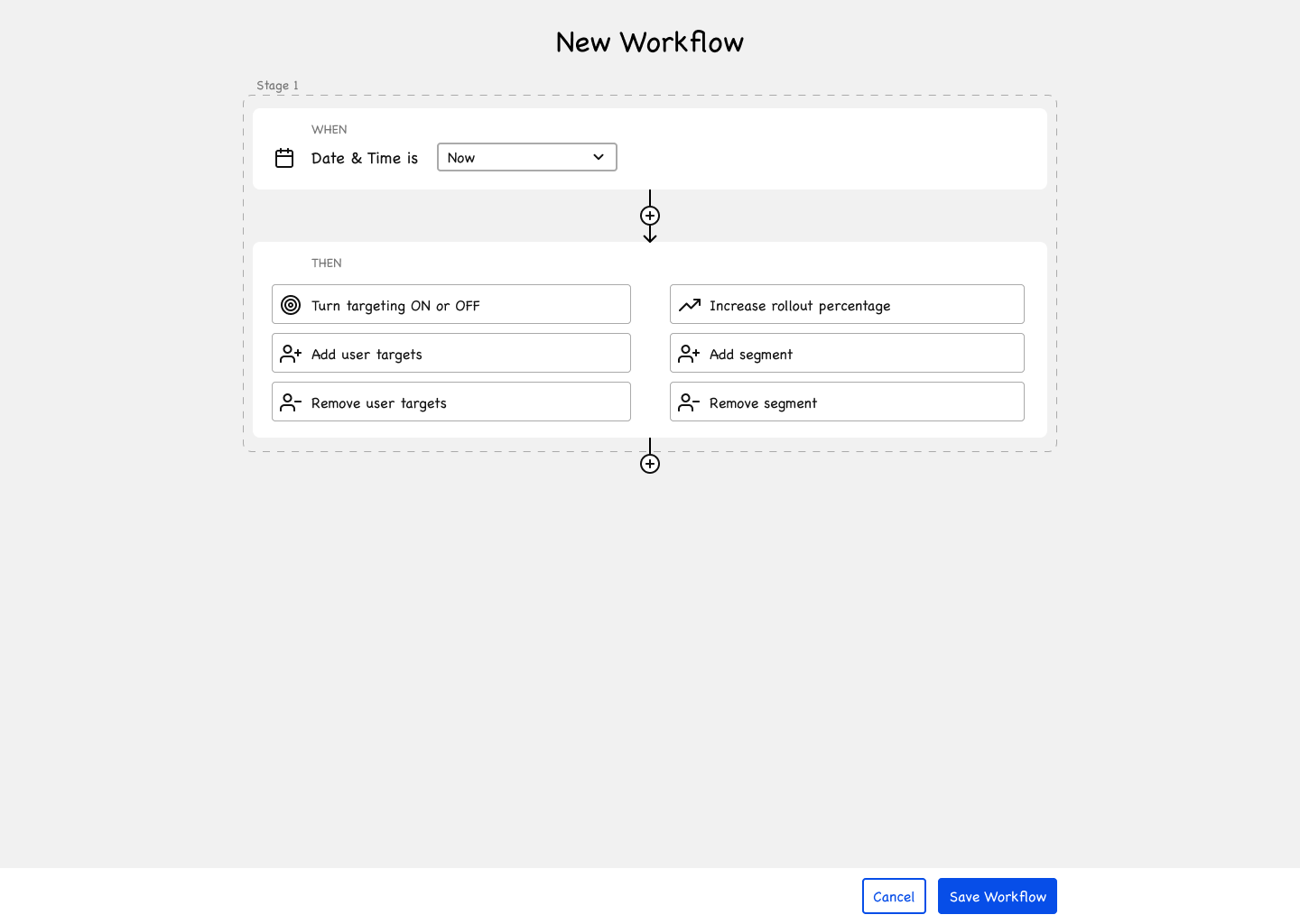 Caption
Caption
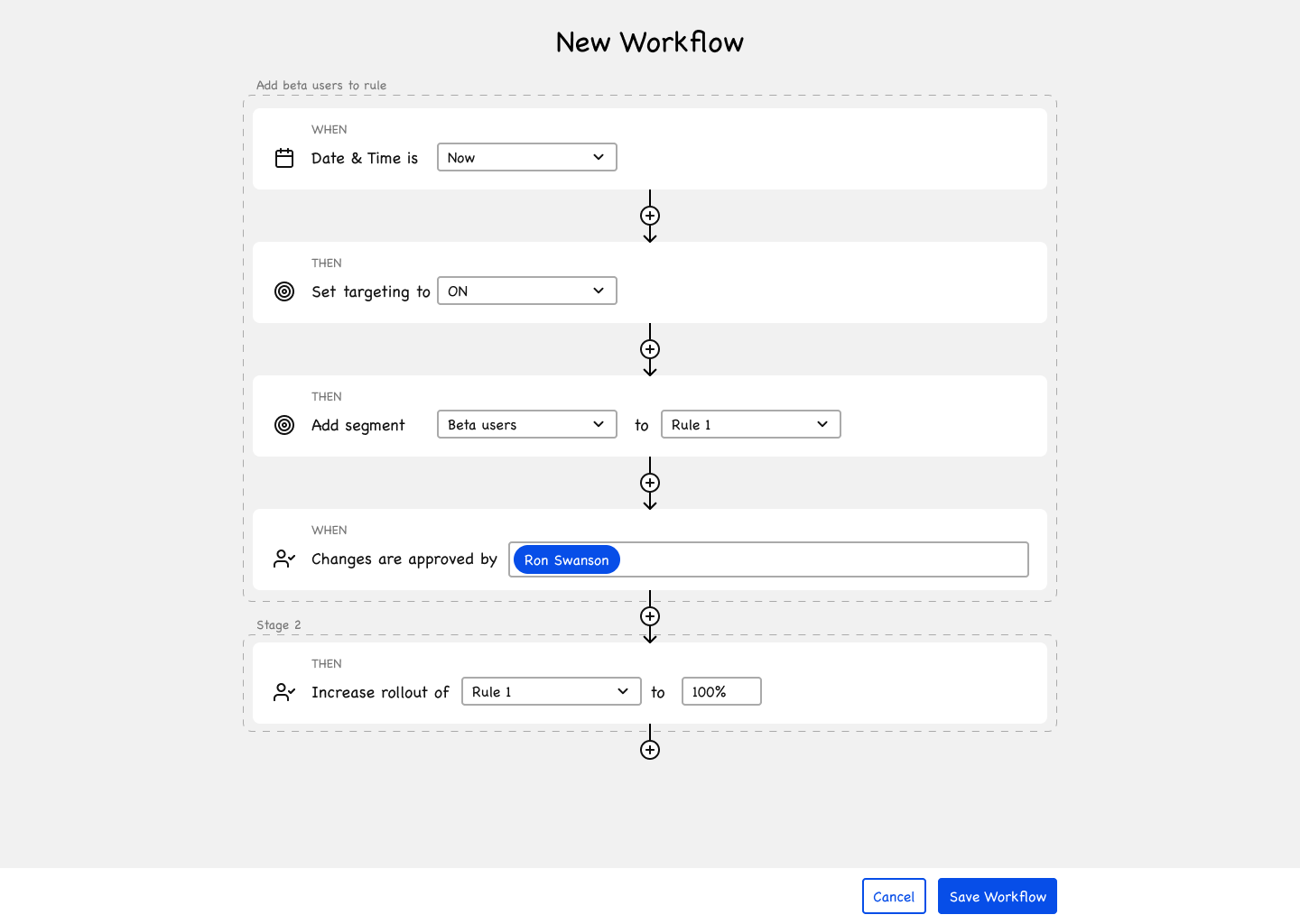 Caption
Caption
 Caption
Caption
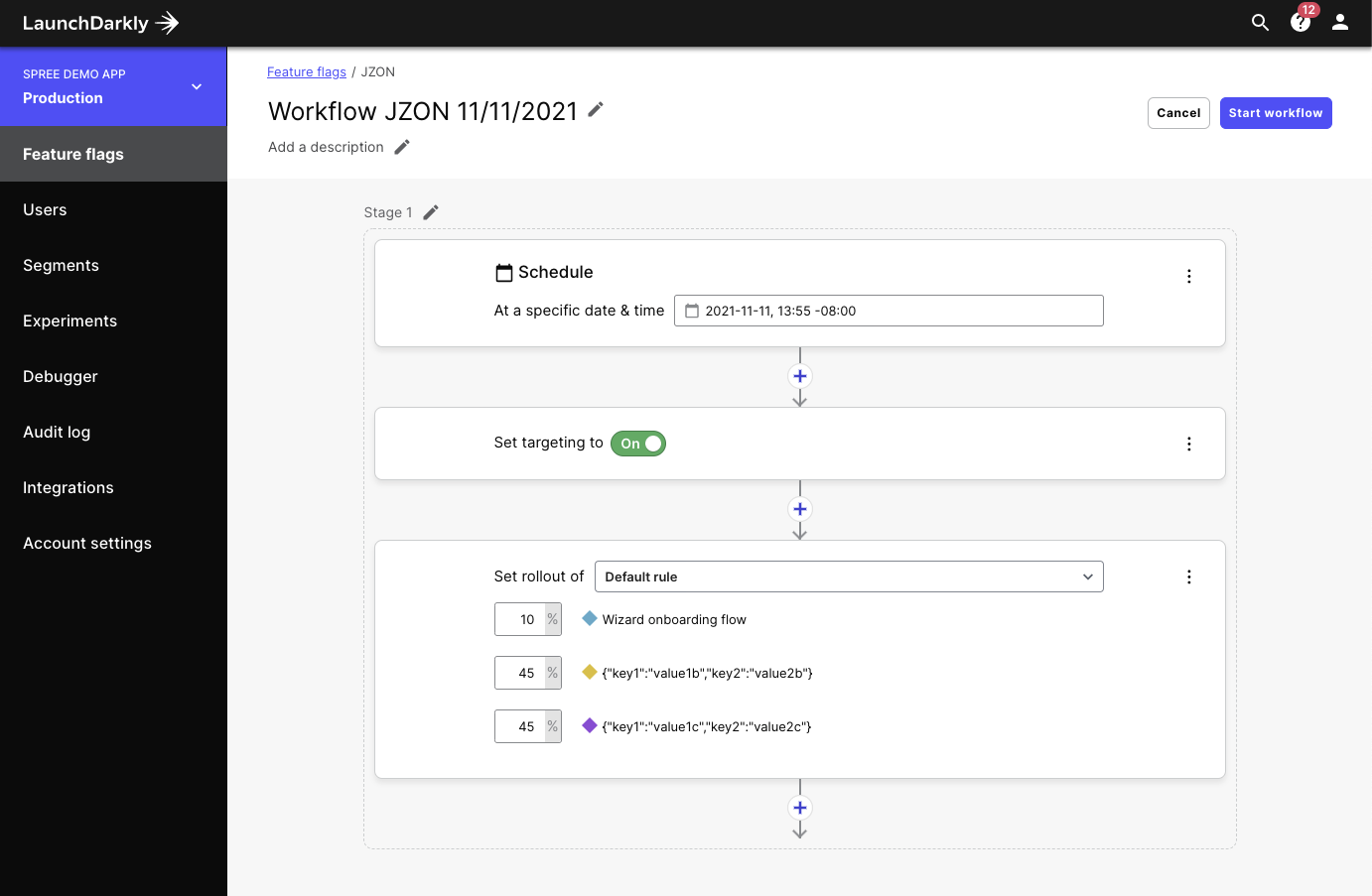 Caption
Caption
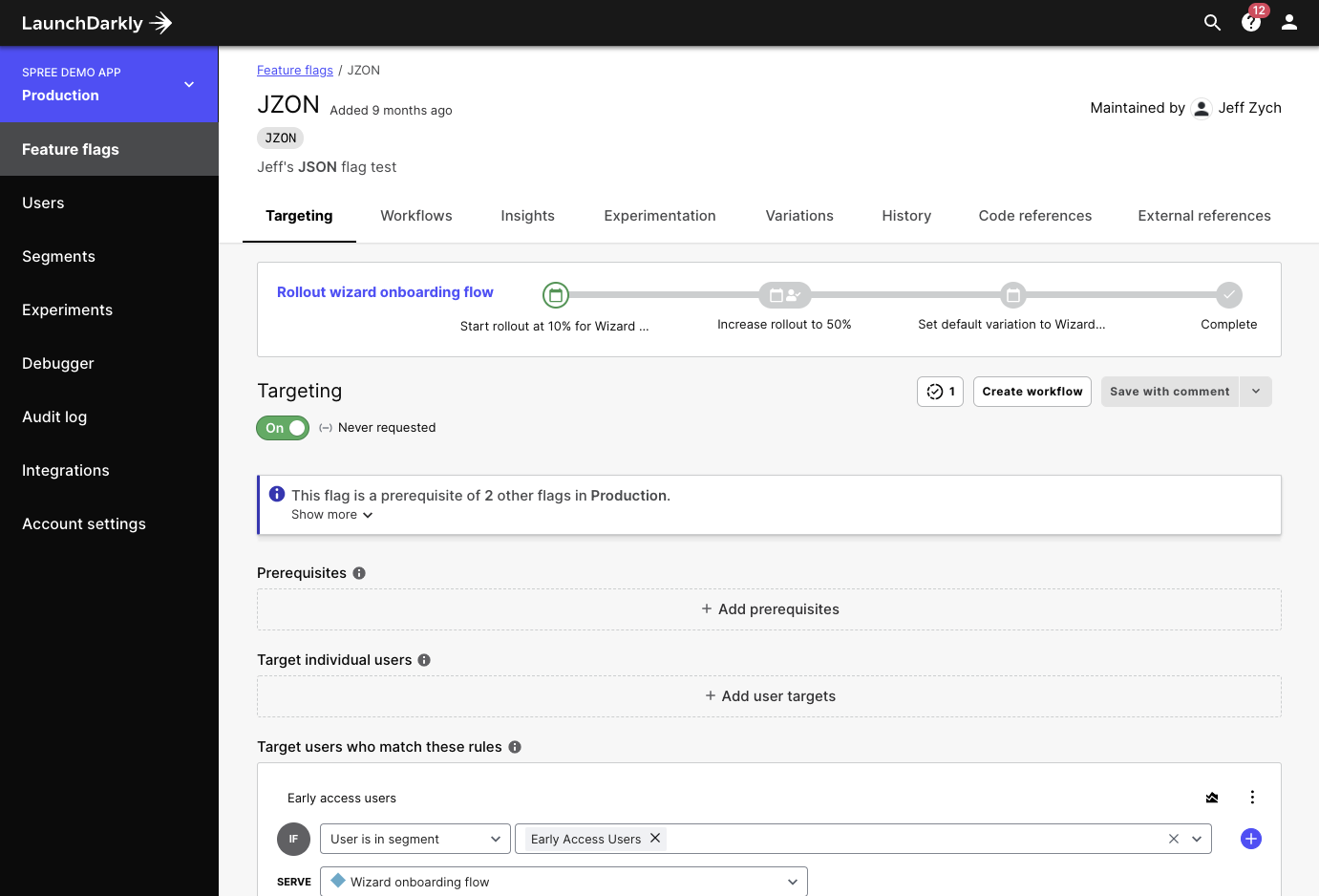 Caption
Caption
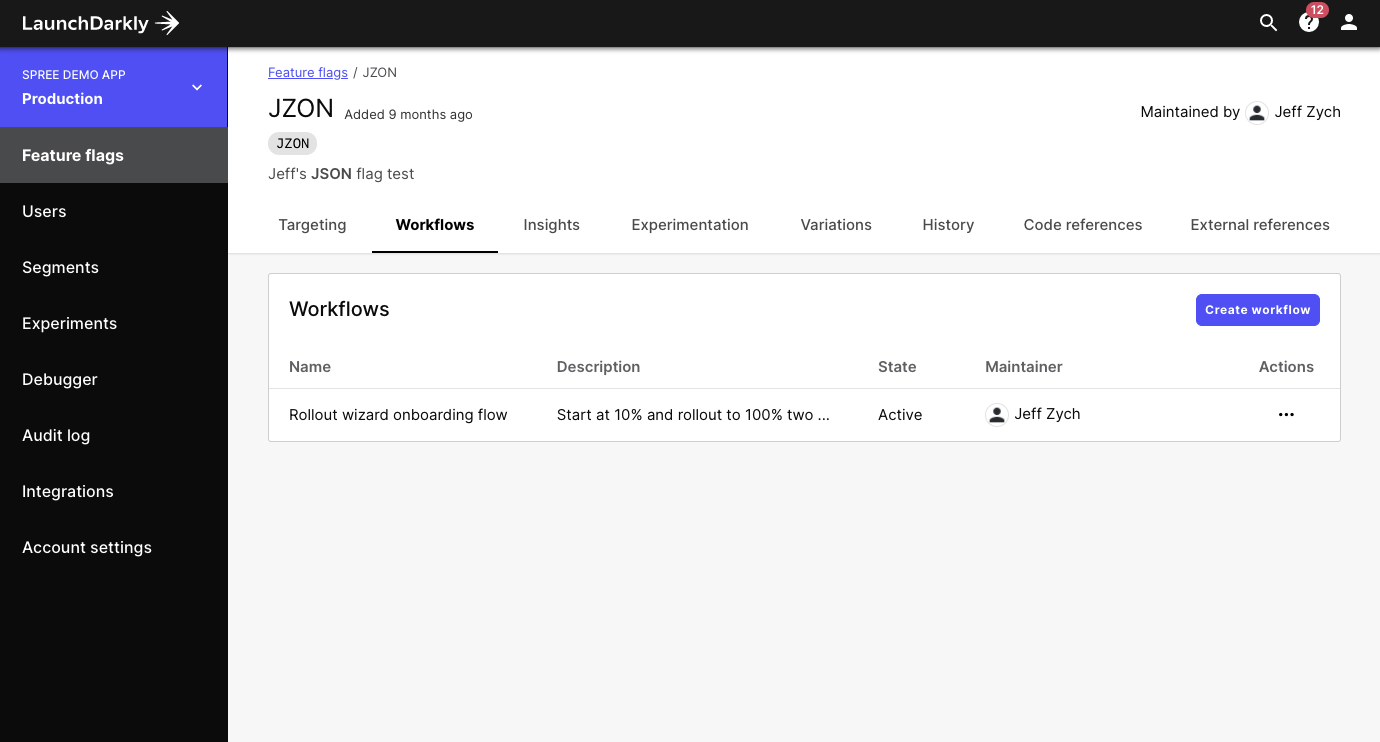 Caption
Caption